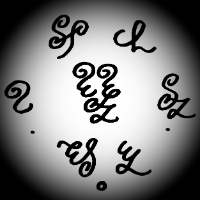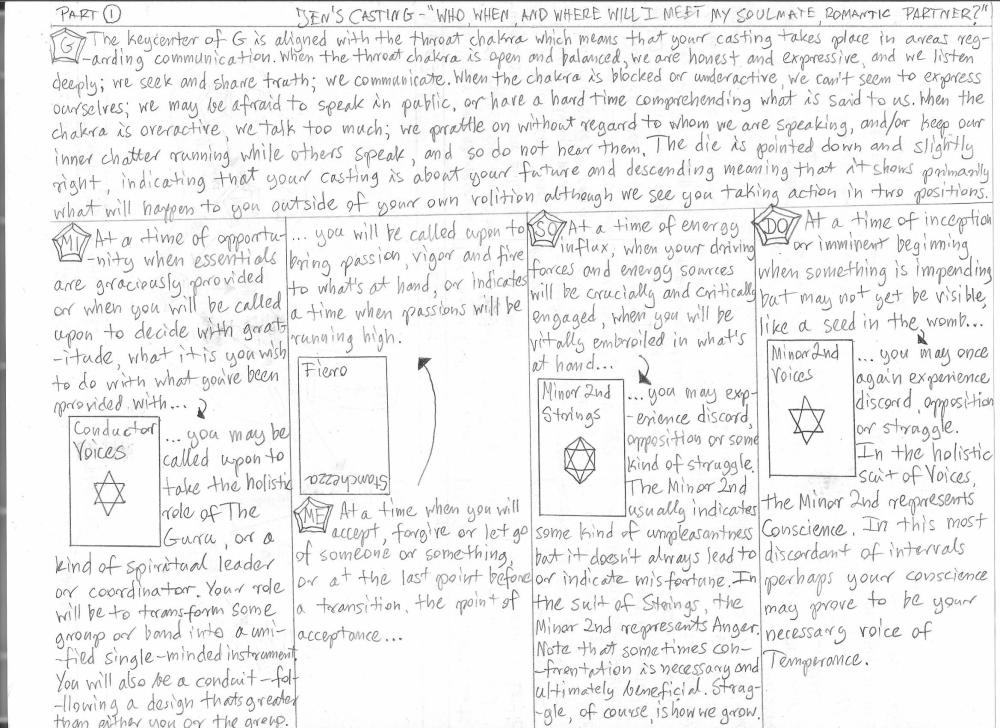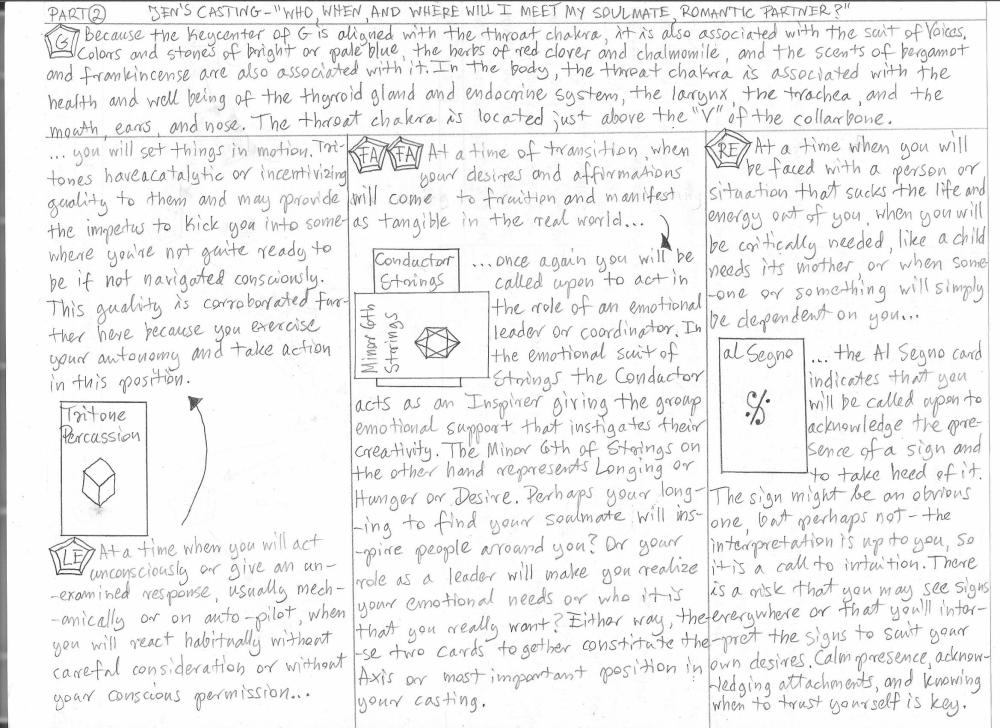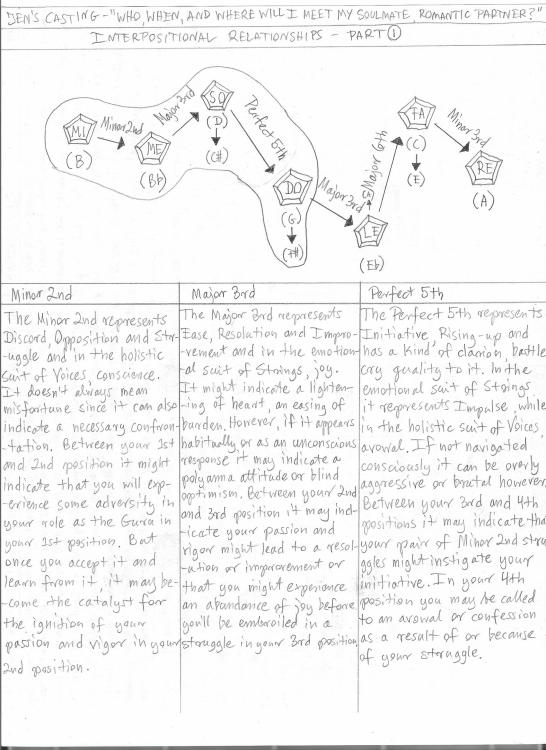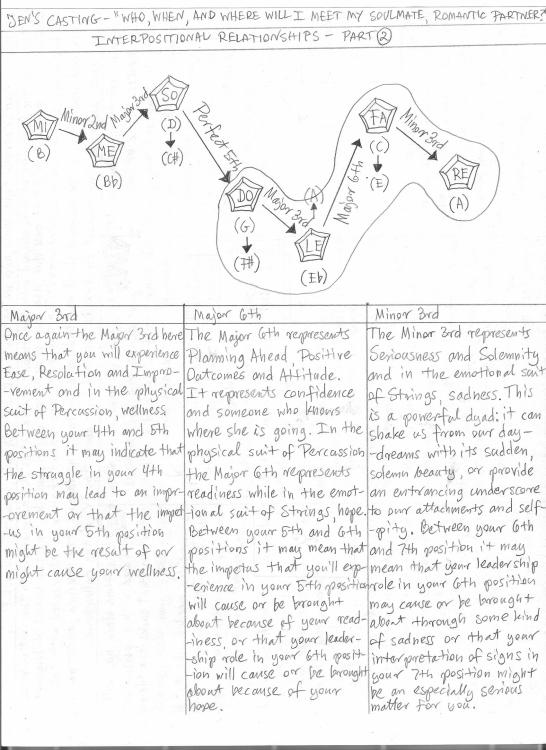Leaderboard
Popular Content
Showing content with the highest reputation since 12/16/2025 in all areas
-
Hello, all. Coming at you with something a little different for the event, but I hope you find it at least interesting, even if you don't particularly like it. I've basically decided to get really good at writing for strings nowadays, and since I'm mostly an atonalist, cello is the easiest since computers can't play that kind of stuff; the implied timbres are super important. So enjoy hearing me poorly play this miniature fantasia on Jingle Bells. I promise there's a method to the madness 😄4 points
-
In anticipation for this year's Christmas Eve, I decided to try my hand at writing another religious motet. Considering the fact that the bulk of this piece has been composed merely in the span of yet another insomnia-driven bout of inspiration, perhaps its modest length may as well be a reflection of missed potential, as I reckon it could have been developed into a more complex structure should its latter half not have got stuck on a protracted pre-cadential spiral. Once again, just as with my previous vocal fugue, the main goal of this composition was to make the text as intelligible as possible (specially taking into account the musical history of such a well-known textual setting), that is, within the confines and constraints of an 8-voice motet. This has ultimately led to some interesting contrapuntal oddities which, despite the preservation of independent voice-leading and thorough avoidance of melodic and harmonic blunders, have produced a number of somewhat unorthodox unresolved dissonances throughout. Nevertheless, I believe such contrapuntal licenses are more than sufficiently justified given the scope of this piece, as well as the sheer volume and density of its texture all the way through. This piece was specifically conceived as a submission for this year's edition of the forum's Christmas Music Event, and shall be presented accordingly in its dedicated thread. YouTube video link:3 points
-
March of the Snowflakes is an orchestral miniature written in a quasi march tempo, inspired by the playful motion of falling snow. This piece was composed as a small seasonal contribution to the Christmas Challenge 2025. I would be very grateful for any feedback, comments, or suggestions. Thank you for listening and sharing your thoughts.3 points
-
This is my first attempt (excluding some best-forgotten teenage stuff) at writing a concerto. The style is my own blend of Classical and some early Romanticism and perhaps a dash of Baroque, but I wrote for the modern valve trumpet. Admittedly, the tessitura may be a bit high, frequently going up to the 8th and occasionally the 9th harmonic. Any comments or feedback would be most appreciated!2 points
-
Among all the other previously published canons of its type, this one might as well have turned out to be the most demanding to perform, in no small part due to the choir's conventional maximum ranges being reached in at least three voices, including both soprano (C6) and bass (E2), making it no small feat to sing. The main lyrics would roughly translate from Latin to English as follows: "In the direst of circumstances the true heart of men shall sing with great hope of leaving behind a memorable life. Even death can conquer those whose memory lies in the glory of their good deeds." The coda, as per usual, reinforces the core message in a variety of ways. YouTube video link:2 points
-
I come to you once again with my 12th Muzoracle casting! This time, Jen asked the Muzoracle "who, when, and where will I meet my soulmate, romantic partner?" (Muzoracle is a storytelling/fortune telling/divination tool similar to the Tarot card deck, but with cards with musical concepts and 12-sided Musician's dice and Solfege dice. Perhaps it may be thought of as a special musical Oracle card deck.) My interpretation of the cards and dice are displayed below. Since the casting featured two cards in the suit of Voices, I used a Soprano and an Alto. Also, there were three cards in the suit of Strings, so I used Violin, Cello and Guitar. Finally, there was a card in the suit of Percussion, so I used the Piano. I chose the Piano and Guitar because Jen has played these instruments in the past and she also happens to be an Alto. If you'd like to find out more about Muzoracle and how castings are interpreted go here: https://muzoracle.net/ This short musical interpretation of Jen's casting is about ~2 minutes long. Since the black 12-sided Musician's die landed on G, the piece is in the key of G which pertains to the throat chakra. I created the following melodic/harmonic underdrawing guided by the cards and the dice. Since the first card drawn was a Conductor of Voices card, I started with a lone soprano singing a chromatic neighbor tone to B, A#. The Violin and Guitar come in next since the Minor 2nd of Strings was drawn in the 3rd position. Following is the Alto which joins the Soprano since the Minor 2nd of Voices was drawn in the 4th position. Finally, the Piano comes in when the Tritone of Percussion card was drawn in the 5th position. The whole piece is repeated since the De Segno al Fine card was drawn in the 7th and final position. If you've gotten this far, thanks for reading! And I hope you enjoy listening to this short vocal chamber work I wrote to represent Jen's Casting. Comments, critiques, suggestions, or observations are of course, always welcome. Thanks for listening!2 points
-
Hi guys! Hope you're all doing well. So, I wrote a poem two months back, and whilst I did, I also made a melody out of it just because lol. So, I thought it had the potential to become an art song, so I composed it. By the way, this song just contains the first stanza of my poem. Do you think I should make more songs for each stanza to do like a song cycle or something? Anyways, I sang this myself because I find vocal soundfonts to be... nauseating. Anyways, I am no singer, so try not to roast me too much for my voice lol. Do tell me how you like it, or if you have any suggestions.2 points
-
So far it is very lovely in its Mozartian/early Beethoven ways. Perhaps the first movement I would not have made as long but tell that to the Eroica Symphony!. I'm also a sucker for lightweight farewell finales, it lifts the spirit.2 points
-
Indeed. The similarity in timbre of instruments within their respective families often tends to muddle the trajectory of individual lines amidst the density of the texture, as has frequently happened in my keyboard compositions even for just 4 voices. But the human voice still retains that distinct timbral quality to it, somehow capable of preventing its integration into a larger choral whole from forsaking the uniqueness of its sound and the meandering of its melody. A testament, perhaps, to how vocal music was upheld as the most sacred during the Middle Ages and the Renaissance; not just because of the references to the purported sanctity of the natural human voice in the Old Bible and the Gospels, but because its endless versatility and potential in conjoining doesn't undermine the independence of each line nearly as much as it otherwise does for mere instruments. Thomas Tallis himself certainly took this to the absolute non plus ultra with his renowned Spem in alium, and yet, the fact that 40 voices singing simultaneously may still be perceived as individually separate with each listening instance still leaves room for even more ambitious polyphonic endeavours to be produced (although it would certainly be beyond overkill to even try). Thank you kindly as well! Though unfortunately I have bad news concerning the languages supported by the current version of Cantāmus: In any case, I'm sure a real choir would be far more adept at singing in Polish than the vaguely synth-sounding lyric renderings Cantāmus usually provides, though of course such an eventuality would come at a far greater cost. Perhaps an online choir with individual part recordings being carefully timed and assembled together might do the trick. Otherwise, a live premiere with a professional choir would be my best bet. Either that or browsing the Internet for competitors, of which I know none whose lyric rendering quality comes even close to that of Cantāmus.2 points
-
Hi @PeterthePapercomPoser, thanks for the kind words. Yes, a lot connects to the original them in some way, but obviously in a way that's idiosyncratic to me, right? There are some very obvious things like this... ...and there are other pretty obvious quotes: mm. 17–18 are just the latter half of the main theme's antecedent phrase, mm. 19–20 are a condensed version of the antecedent as a whole (<E, G, C, D, E, F, (E,) D, G>), and the notes for the tremolo parts are the first three notes of the theme (<E, G, C>). But then there are just decisions that I made artistically. For instance, I think the idea that the main melody of the non-introductory carol can be condensed into a pentachordal diatonic subset with only one semitone is very fascinating, so I emphasized the semitone throughout my setting as like an opposite to diatonicity. So lots of semitonal dyads (both harmonic and melodic) all about. Sounds rough, which I like, and also meets the design philosophy. For example, passages like m. 16 where there are both ic1s and ic2s, which, to me, emphases that friction between the diatonic and chromatic. But, to be honest, I didn't think that hard about it, haha. Most of the time, I just kinda liked the dissonance 🙂 I think the fact that you can hear echoes of the original is way more interesting than having every single thing be attached to it. Thanks again for your eyes and ears!2 points
-
Hi @Monarcheon! It's so smart and creativer for you to divide the original Jingle Bells melody to different segments and place between interlude passages like the tremolos. Those techniques like sul ponticello, tasto, vibrato and harmonics are really used with great effect, and as you say, the implied timbres are super important for this to really give a refreshingly new look to an otherwise clichéd melody! You are just too humble! Your playing is so good here and I promise I enjoy it wholeheartedly! Thx very much for playing this yourself, the computer rendition would be umch worse than your playing! Also, thank you for joining the event and becoming more active again in the forum! P.S. Honestly if Peter didn't sneak in giving you a badge first, I would give you one too! You totally deserve the "String Aficionado" badge! Henry2 points
-
Here's a little Christmas card for y'all I found from a few years ago. It's probably not the best fugue ever written, not by a long shot, but it's fun. Composed: December 22 - 24, 2017 at Austin Scoring: Keyboard solo Style: Baroque Duration: 2:092 points
-
Here's my submission! Perhaps I should have waited till Christmas Eve for its publication, though in the end I reckoned the sooner might as well be the better. P.S.: I wholeheartedly agree with the distressing concerns brought forth by @AngelCityOutlaw regarding the AI-generated music submitted for this event. It should go without saying that allowing AI-generated material to be presented on par with compositions requering hours upon hours of effort and dedication could run the risk of severly undermining the legitimacy and ultimate purpose of these community events, not just on account of the frictions and controversies caused by the presence and promotion of AI-generated content, but also on a more fundamental level which has been thoroughly implied over the course of this discussion. Despite this, I firmly believe those who want to participate and submit their art should not hesitate to do so. Why let so much time, effort and dedication go to waste after creating a work of art that is in any capacity worth far more than mere AI imitations? My take is that we should not be deterred, but rather emboldened in the face of these dire circumstances we are living through, that we may adapt to this unsettling trend and make our art known regardless. In fact, that's precisely why I think it's more important than ever not to refrain from posting our own music, lest we inadvertently pave the way for more of this AI-generated music to claim our place. It is rumoured that the Dead Internet Theory may as well soon become an increasingly encroaching and inexorable reality. By refusing to yield to the tide and sharing more of our own creations, hopefully we might briefly forestall such a harrowing prospect for this tiny little corner of the Internet where so many creative wonders are being posted and discussed every single day. The point is not to force these AI-generated compositions out by decree, but to make it so that the abundant music produced by humans in this forum may flourish beyond the scope of neural networks being used as amoral tools or shortcuts to achieve similar results in appearance, yet severely lacking in personal significance, emotional depth or even a core message capable of steering the course of the compositional process. Banning AI-generated music will not ameliorate the problem at large, but composing music through righteous hardship might as well be the only substantial antidote against the proliferation and normalization of this kind of content. That being said, I'm certain this must be quite a difficult point of contention for the forum's staff to deal with and try to find a meaningful solution for, so I won't comment further on the subject matter. In any case, I hope whichever resolution or agreement is reached on this issue will allow the course of these community events to carry on peacefully and with respect towards the time, effort and dedication proportionally invested into each submission. It is good to know that this matter is being seriously discussed by staff and high-ranking members alike, and as such I would like to thank @Henry Ng Tsz Kiu and @PeterthePapercomPoser among others for their dutiful labour in calmly trying to sort out things amidst the heat of the debate.2 points
-
Wow... Your voice is wonderful, I love the timbre and emotion in your singing. Don't be bashful about it! Do I think you should do more songs? Definitely :) Please keep writing and performing these, I had no idea I'd like your vocal music so much2 points
-
2 points
-
You can just reply to your topic with a new post posting the edited music, or if you don't want to retain the old version, just simply edit the original post with the edited version of the music. Henry2 points
-
This piece is an exploration of how two vastly different spaces can inform each other and interact in a more indirect way. When a piece explores two textures, they’re usually interwoven with each other and provide contrasts throughout, but I was curious what would happen if I completely separated them from each other, and made one of them the result of the other. Thus, this piece resembles a becoming of a new sound-world from another, and is namely a kind of transfiguration.1 point
-
I thought about the rain, it just so happens to have rained last night and your piece fits today's mood spectacularly? If you want to develop that streak further, look no other way than Takemitsu's Rain named pieces: Rain Tree for three percussionists, Rain spell for mixed ensemble, Rain coming for chamber orchestra, Garden rain for brass1 point
-
Beast of a piece, let me know what you all think!1 point
-
Reminds me of Disney, and of Delius' A Mass of Life:1 point
-
1 point
-
This is my first submission (of two) to the YCF 2025 Christmas Event. We are all awaiting (or at least the children do wait for) Christmas Eve. Since there are still a few days to go, the time should be peaceful and quiet – despite the stress and noise as it is in reality. Thus, the idea behind this piece is to imagine the night before Christmas, the church where crowds of people will gather tomorrow to celebrate Christmas Eve. The church is empty, or seems to be empty, but there are three musicians playing a piece that is reminiscent of either night music or a final rehearsal before the upcoming concert.1 point
-
Thanks very much to both of you for listening! I think overall I'm pretty pleased with the way it turned out. I'm especially pleased to see you say this, because I spent a fair bit of time not just writing the cadenzas but trying to get Finale to play them in a way that sounded human.1 point
-
1 point
-
Still participating in this event as committed although I am quite busy lately lol1 point
-
Hi all, As some of you may know, I am actively engaging in my composition project for differential festivals. For that reason, I want to adapt into different types of music and add more variety in my project. I chose arranging solo piece to orchestal music to 1) appreciate the style of the composer, and 2) hopefully benefit orchestral work listeners/ writers. Work orchestrated in this post: Piano Sonata in C major, Hob. XVI/50, L.60 Written c. 1794 by Joseph Haydn. This first movement - Allegro, was arranged by me. When I have time, I will share other movement. A side note, I only listened to the piano recording once before I decided to arrange it - perhaps it is a good thing in the sense that I got my interpretation different from pre-existing pianists Thank you for listening! Note: Attached original score for reference. HoYin1 point
-
Hi @Fugax Contrapunctus! For me it seems like having the Soprano in such a high tessitura and reaching the high C (and ending on a sustained high C) is more demanding that the low E's in the Basses. I wouldn't hesitate to transpose this piece down a half-step if it were mine - the English Horn could still play its part. And the Altos could still reach the F#. From my cursory perusal of your score, I think every other voice and instrument could still reach their notes. Btw - I liked the coda and that you managed to end in the same key you began. Thanks for sharing!1 point
-
Hi @MK_Piano! The 1st movement fanfare reminds slightly of one of John Williams' Olympic Fanfare and Themes. But on the whole it has a very wondrous and magical sound to it that I like! 2nd movement - this has a surprising Arabic/Egyptian flavor to it. It might be because the main theme has a certain similarity to James Horner's Danger Theme. 3rd movement - this movement depicting the prospect of liftoff is a great hopeful ballad (at least in the beginning). The inclusion of the U.S. National Anthem brings great nostalgia to the occasion. It's also quite action-packed depicting well the intensity and explosive process of liftoff. You have a great intermingling of themes from the 2nd movement - it's great when writing a multi-movement work that you get to make these big melodic gestures through thematic association. 4th movement - quite an eerie start that would be very appropriate to the weightless tumbling of the Apollo spacecraft towards the moon. I can feel the enormous blackness and loneliness of space in this music. 5th movement - this starts off quite menacing. If I didn't know any better I would venture to guess that the Apollo 11 spacecraft encountered some kind of dire emergency in space while trying to land on the moon. Nice minor version of the National Anthem! That's cool that you included the actual audio of the voices of the astronauts. The music after that is so joyful and transcendent but still has a touch of wonder and awe. Overall this is quite an accomplished orchestral suite! Great job and thanks for sharing!1 point
-
Hi @Aiwendil! Surely, an accomplished classical Trumpet Concerto! It's both melodically satisfactory while providing the soloist an ample challenge and virtuosity. The cadenzas are well written as well! Not to mention they sound humanized rather than mechanical and metronomic. Cadenza writing is its own beast and getting a good rendering of a cadenza from a computer program is all-the-more difficult, but I think you accomplished it! Perhaps your 2nd movement could have been more challenging for the soloist, but that might have detracted from its great, stately solemnity. I think the 3rd movement is probably my favorite. It makes for a really great finale to the whole concerto. I played Trumpet for a short time before switching to French Horn and for me those high concert C's would definitely be too demanding. But the instrument is a higher C Trumpet so it possibly might be more feasible than on a Bb Trumpet. Also, it seems you do not exceed the high concert C anywhere, so it seems all-the-more practical. A professional virtuoso should definitely be able to play it, as I'm sure you well know. Great job and thanks for sharing!1 point
-
@SeekJohn14v6 has also entered a piece which was created with the assistance of AI (Suno):1 point
-
This is only an event and not contest. Lord Jesus will be happy of your service by clicking a button.1 point
-
Damn… the theme sounds so cool and elegant! It has a sort of dark urban fantasy vibe. I could imagine a dark trench coat wearing protagonist looking for answers in a weird underworld (oddly specific, I know). Quite elegant, crunchy harmonies in there and the interplay of timbres between the instruments you choose is quite masterful. Loved it!1 point
-
Thank you so much, Peter! I was kinda reluctant at first to perform this myself, given I knew almost nothing about vocal performance beforehand—so it’s a great relief to know that my singing skills are passable for a casual performance, haha! (It’s a good thing I took a week’s time to gain some vocal literacy and work a bit on my atrocious passagios, or I would have caused your ears to bleed lol) Regarding the clef issue, as per my knowledge, for an art song/lied, it is standard practice to write the voice part in treble clef notwithstanding the range of the singer. The reason is, most singers, with the exception of basses, have been historically trained to read music in treble clef, and are expected to transpose the part according to their respective ranges. For example, there is this song cycle by Beethoven called “An die fernen Geliebte” which is also primarily for baritone, but all the scores I have seen so far have had the voice part written in treble. Same goes for songs by Schubert. Another reason is to make the song non exclusive and meant for any singer of any range. At least that’s what I know. (Edit: Now that I did some digging, I learned that the treble clef convention I followed is a bit old-fashioned, and that modern art songs favour using a clear bass clef for baritones and basses. Anyhow, I kind of wanted the piece to not be exclusive to a particular voice range, so treble use is still justifiable given my case. Thanks for bringing this up. I learnt something new.) Your observation about my singing having a sense of Indian influence is actually very interesting! Although I am untrained in Indian classical music, my knowledge about it being mostly realised through a western lens or framework (even though I am Indian myself), I did grow up in a household where Indian folk and classical music were played almost everyday. So my baby brain might have picked up the way Indian folk melodies are ornamented, phrased, and contoured haha! It’s interesting to think about1 point
-
Hey @ComposedBySam! Great piece! I think, even though you wrote the voice part in treble clef 8vb, I think the actual range of your voice reaches to the levels expected of a Baritone rather than a Tenor voice! The Tenor voice's lowest note is usually B an octave below middle C. While the Baritone (I am one myself) can reach all the way to G an octave and a half below middle C. So I think it would have been more appropriate to write the part in bass clef. Like Vince, I love your singing! I think just from hearing your voice and your style of singing and composing of this song, I can hear an Indian influence/heritage in it. I am also stoked to hear more of the stanzas of your poem realized in this way! Great job and thanks for sharing!1 point
-
Greetings! Haven't stopped by in a while, thought I'd take the occasion of winning the 20 Year Membership badge (!) to drop in and share a big something I finished recently. This is one of those pieces I have worked with, off and on, for many years - I began composing it in 2001 and just finished it this summer. I cannot account for exactly why it took me so long to bring this to completion, except that for much of that time I didn't feel worthy of the material I had sketched, and couldn't readily come up with ideas to match it in quality. This piece is in my usual Classical style, unusual mainly in that I have employed an exceptionally large orchestra, including three trombones. Ostensibly, it is written for instruments of the period, roughly 1800 to 1810, though I have it on good authority that the flute part is in places nearly unplayable on a flute of that time - not impossible, but extremely difficult in such places as the frightful two-octave ascending chromatic scale in the first movement, and the mortifying cadenza in the third. Ordinarily I would have edited the piece on such advice, but there comes a time when artistic vision must prevail, and this was one of those times. The opening movement is a standard Sonata-Allegro as typically modified for concerti in the Classical period. The second movement (Andante) is broad and expressive. The third movement is a Polonaise (Vivace alla Polacca) in the form of a Rondo. I hope you enjoy the piece, and as always I look forward to any comments you may have. Thanks!1 point
-
1 point
-
1 point
-
1 point
-
Greetings Henry! Under normal circumstances, such egregiously positive feedback would have me including several rephrases of "thank you" in my response. In your particular case though, I feel it is only proper that I answer with a wholeheartedly humble 不敢當, and for good reason. Of those among your 6-part compositions I've had the awe-inducing pleasure of listening to, your mastery of complex textures across vast swathes of music is on a completely different level, perhaps even unrivaled, if I may dare. To mention the most prominent example, your String Sextet in G-flat major, does not merely fit the conventional definition of "masterpiece", but rather expands upon it beyond what was conceptually possible in my mind up until that point. Its technical perfection and measured balance of musical aspects excelled over everything I knew when it comes to structural integrity, modulatory prowess, stylistic variety, motivic resourcefulness, contrapuntal-device handling, internal narrative coherence, ...the list just goes on! Given I already wrote back then what was perhaps my lengthiest review ever on this forum, I won't repeat myself too much on the myriad wonders your work ellicited on me and continues to evoke every time I've listened to it since, but one thing I shall mention again: with 8 voices or not, my tiny little compositions are not even worthy of being mentioned remotely on par with such jaw-droppingly all-encompassing artistry in music you have developed and refined to such a great diversity of effects. What I am trying to say is: it means a lot to me to hear that you, whom I consider to be one of the greatest masters in our generation, are pleased with such a comparatively minor piece of mine, if there's even to be any comparison at all between this and your utmost proficiency in counterpoint both innovative and sublime. It may have two more voices than your 6-part compositions, but does it even matter when the brilliance of any of those far exceeds my whole production like a supernova outshining an entire galaxy? In the end, I can't help but appreciate the sheer generosity of your remarks, even if I ultimately feel undeserving of them in the face of the insurmountable magnitude and unparalleled quality of your output, but it is precisely because of such achievements that your words mean so much more to me, almost like the very enbodiment of the kind of composer I aspire to be guiding me along the right path forward. Thank you kindly, Henry. It truly is both an honour and a priceless gift to have thus met your approval.1 point
-
Hi @Fugax Contrapunctus! Only in choral music can so many individual lines at once still retain their individuality. The tone colors of the different voice types are different enough as to grant them distinctiveness even when they're really close together or even overlapping. And here I thought I was working with a lot of voices in my recent Christmas Mash-up for SMATBB!!! Although even in that 6 voice arrangement, I sometimes use divisi. Thanks for sharing this wonderful choral work! It makes me wonder how apt Cantamus is at rendering words in other languages (like for example Polish since my Christmas Mash-up's so far feature Polish, English and Latin lyrics). Great job!1 point
-
1 point
-
Hi @Monarcheon! At first I was very puzzled by this piece as it was very difficult for me to hear how it was at all related to Jingle Bells. But I have since listened better with the help of the score and I can confidently say that I do hear it. You have cleverly fragmented the theme and augmented each fragment into its own unique musical gesture. The extended tremolo on one note I perceive as a development of the basic repeated notes "Jingle Bells". While the tremolos between two different notes I perceive as a development of "Jingle all...". "...the way" is developed in measure 10. I maybe would have liked for the associations to the original Carol to be more obvious but you certainly bring your own particular style to the season! I love your setting of "Dashing through the snow..." in measure 23. Some of the remaining material still puzzles me however in how it is related to the Carol - did you take a lot of liberties with it? Thanks for sharing this wonderful recording! I think your performance is excellent and really brings out the unique creepy tone colors of sul ponticello and sul tasto and harmonics and tremolos all put together and what not - it's an extended technique frenzy! Makes for a particularly spine-chilling Christmas! Haha1 point
-
1 point
-
1 point
-
Here is my submission: https://musescore.com/user/89049631/scores/29505320/s/jl-md7 And here is the pdf: https://drive.google.com/file/d/1oi66fwxpfjm4bvBB6mYQ9d5GGz-afdB2/view?usp=drivesdk I hope you enjoy it! ( ╹▽╹ )1 point
-
Than you for your feedback. I shall try to implement these. (But when I do, would I put it in a new topic or just edit my old one?)1 point
-
Greetings all! Hot off the presses, here is my latest piece, my Oboe Quartet in D, for Oboe, Violin, Viola, and 'Cello. It's in four movements and lasts about 17 minutes. I don't have any accounting for why I decided to write this piece. I was just sitting there one day after I finished a Divertimento for woodwinds and had let some space come between - several weeks without writing - and the idea for the opening movement came to me out of the blue. I started writing, and it came pretty easily. The whole thing took about a month intermittently. I'm a violist, not an oboist. A couple of weeks ago I made a post asking for some guidance as to the limitations of the oboe, and got some good answers. After doing some research on my own additionally, and checking with a friend of mine who plays Classical Oboe, I've made some calculated demands in the upper register of the instrument that I'm hoping won't be too taxing on a Classical instrument. It certainly should present no problems to a player on a modern instrument. I did my best to provide reasonable opportunities for breath - the last movement being the most demanding in this way, but circular breathing may be a good option - as well as quite a number of rests to allow the player to rest his/her embouchure. I've done my best without selling myself short, and I hope it shows. I hope you enjoy this. I look forward to your comments. Thanks! - Composed: November 13 - December 6, 2025 at Austin. - Instrumentation: Oboe, Violin, Viola, Violoncello. - Style: Classical, ca. 1790-1800 - Duration: 17:15 - Electronic Rendering by Finale 27 music notation software’s "Human Playback" with NotePerformer 4 artificial intelligence assisted interpretation.1 point
-
I've only recently started this, but I would love to hear suggetions 😄 nutcracker inspired.pdf nutcracker inspired.mp31 point
-
Quite the mighty show this is it was definitely a journey to listen to…~ that I usually do all of my critique in a transcript sort of like a judge tape this piece is definitely too long for me to do that. so to avoid this becoming a giant paragraph where it would take days to read I would just say my thoughts and observations here from memory definitely what a monumental piece. This was it sounded like the creation of life too, and definitely amazing with the pacing those little Interlude and instrument features kind of made the thing feel fresh and also variations within the common theme of just diatonic dissonance throughout. I don’t know Spanish or anything so you could correct me, but on the orchestration in the instrumentation, you wanted hand bells to be used. The thing about that is usually you’ll have multiple people play them in this case you’re treating it like it’s own mallet instrument which in this case they could be mounted on something. though that this is told to be for a virtual ensemble, it would be quite the piece for a existing orchestra to play in real life Monumental work for you keep going1 point
-
Thank you. Yes, John Adams is my biggest contemporary inspiration.1 point

.thumb.png.8b5b433a341551e913a34392660bc95b.png)

